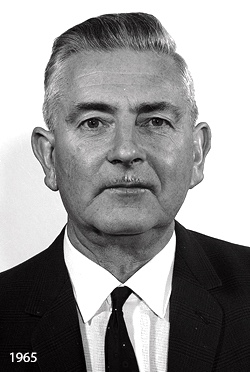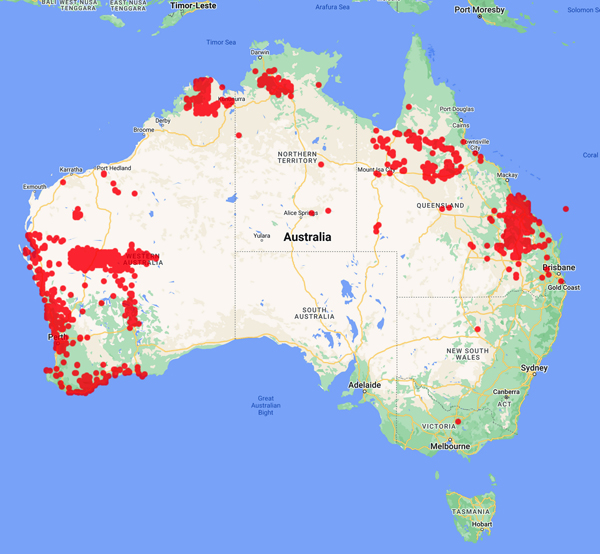
Council of Heads of Australasian Herbaria
Australian National Herbarium
Biographical Notes
 |
Council of Heads of Australasian Herbaria |
 Speck, Nathaniel Henry (Nathan, 'Than') (1906 - 1970)
Speck, Nathaniel Henry (Nathan, 'Than') (1906 - 1970)Born at Mount Crawford, Sth Aust. on 6 December 1906; died on 3 July, 1970, in Canberra, ACT.
Son of Henry John Speck and Harriet Jane Woolford.
Speck was one of those rare people who built two successful careers during his life time, first as a science teacher then secondly as a botanist and ecologist.
He began his second career with a BA degree majoring in botany which he started in 1942 at the age of 35. He graduated from the University of Western Australia in 1948.
Between 1949 and 1952 he worked on his masters dissertation in which he described and mapped the major plant communities of the Swan Coastal Plain around Perth. At this time he was also responsible for the establishment of the Herbarium at the Botany Department of the University of Western Australia, which played a major role in the development of the illustrated key to the Western Australian flora produced by William Blackall and Brian Grieve.
Speck was awarded his MSc in 1952.
He immediately enrolled as a PhD candidate and in 1953 was
awarded a Senior Research Fellowship. His PhD topic was very ambitious; he attempted to describe and map the vegetation communities of south-western Australia from Shark Bay to Esperance, and as an aside he undertook a biogeographical analysis of the family Proteaceae across this region.
During this time he continued to assist Professor Grieve with preparation of the illustrated key to Western Australian flora, in redrawing and redrafting some of Blackall's earlier illustrations, and by taking many colour photographs for illustration of those volumes.
In July 1953, Speck applied for a position as a Technical Officer with CSIRO's Land Research and Regional Survey Section. It appears that CSIRO was so impressed with his application that they readvertised the position at a Research Officer level and Speck was offered this position, which he accepted in November 1953 at the age of 47.
He and his family moved to Canberra on 5 April 1954.
He immediately undertook field work in the Gilbert-Leichardt area, around Wiluna, Western Australia and in the west Kimberley.
He was made permanent in CSIRO in November 1954, and reclassified to Senior Research Officer in 1957.
Speck was awarded his PhD in 1959 from the University of Western Australia. His thesis was in two parts. Volume 1 described and mapped 62 plant associations in 26 vegetation systems across the southwest of Western Australia. The second volume mapped the distribution of 426 species of Proteaceae across the same area on a 50000 yard grid, and for the first time quantified the patterns of diversity of this family.
It is unfortunate that Speck never formally published any of this work.
In the last few years of his professional life, Speck undertook consulting work as a survey ecologist for the United Nations Food and Agriculture Organisation (FAO) and the UN Development Program in Argentina while on un-paid leave from CSIRO.
He retired from CSIRO at the age of 60 on 2 February 1966.
Source: Extracted from:
www.geni.com/people/Nathaniel-SPECK/6000000198793633190
H.Hewson, 'Australia - 300 Years of Botanical Illustration' (1999).
N. Gibson, G.J. Keighery & B.J. Keighery, 'Contributions of N H Speck to the biogeography of Proteaceae in Western Australia'
Journal of the Royal Society of Western Australia, 80(2), October 1997
Portrait Photo: 1965, CSIRO Passport photo archive.
1965, CSIRO
Data from 7,018 specimens
